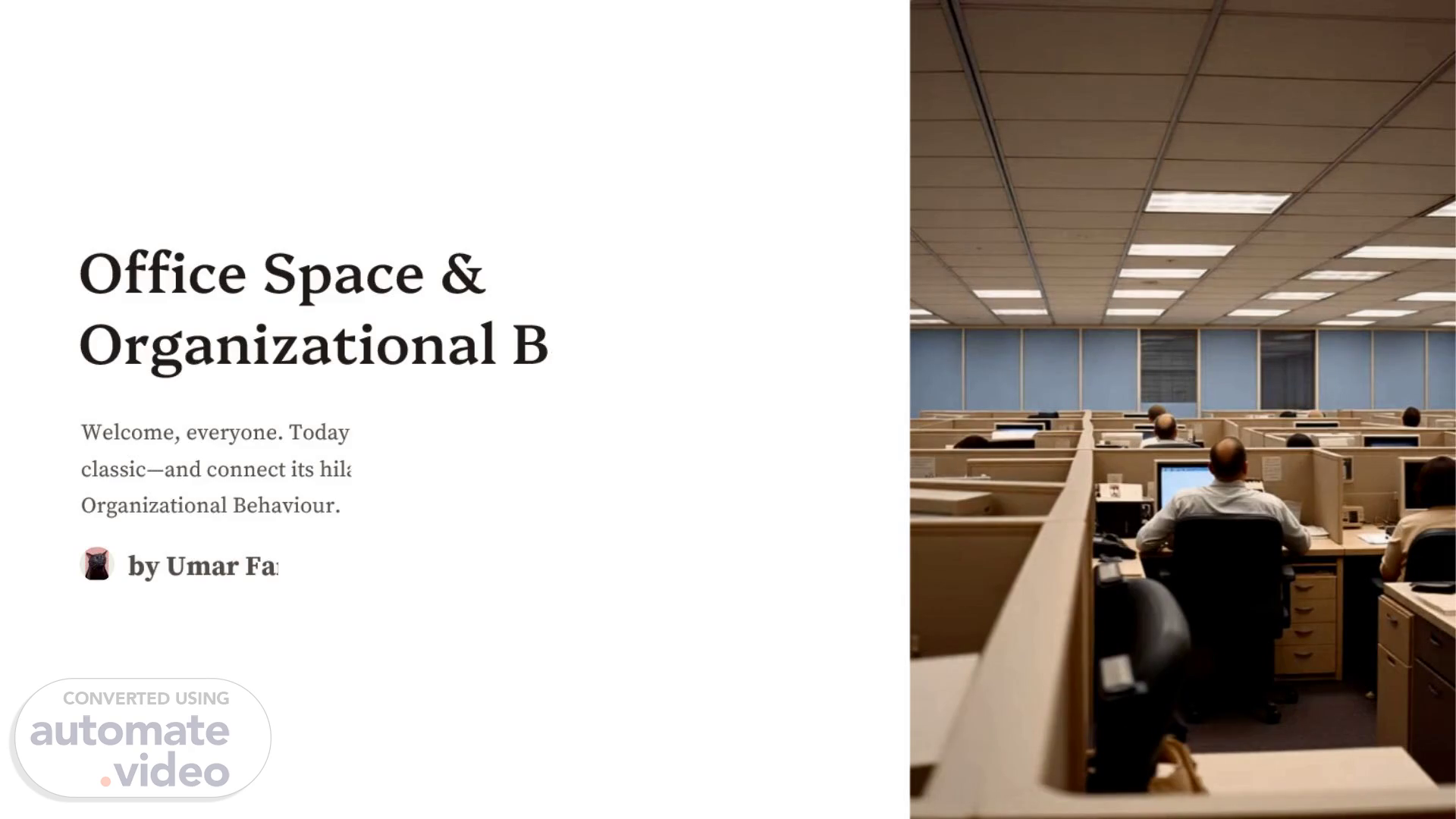Scene 1 (0s)
Office Space & Organizational Behaviour. Welcome, everyone. Today we’ll explore Office Space —that 1999 cult classic—and connect its hilarious cubicle antics to key concepts in Organizational Behaviour..
Scene 2 (34s)
[Audio] The film "Office Space" portrays the absurdity of office life, where employees struggle to find meaning and purpose amidst bureaucratic red tape and pointless tasks. The deadpan humor highlights the monotony and frustration that can arise from feeling trapped in a system that values efficiency over humanity. Iconic scenes, such as the printer-smashing moment, serve as a powerful metaphor for the desperation and disillusionment that can occur when individuals feel undervalued and unappreciated. By examining how characters navigate their working lives, we gain insight into how organizations can inadvertently create environments that stifle creativity, motivation, and job satisfaction..
Scene 3 (1m 21s)
[Audio] Peter Gibbons's apathy towards his job reflects his negative attitude towards the monotony of his daily routine. His motivation, or lack thereof, stems from his dissatisfaction with the company's policies and procedures. This highlights the importance of understanding individual-level factors in determining employee engagement and productivity..
Scene 4 (1m 43s)
[Audio] Peter Gibbons, the protagonist of this story, was once a bored software engineer stuck in a sea of TPS reports. He felt suffocated by the monotony of his job, and his motivation had hit rock bottom. But then something changed. After hypnosis, he became more authentic and productive, showing us that autonomy and meaningful work can be powerful motivators. This aligns with Herzberg's two-factor theory, where hygiene factors prevent dissatisfaction, but it's the motivators that drive satisfaction. In this case, Peter's newfound sense of purpose allowed him to do less, but achieve more..
Scene 5 (2m 18s)
[Audio] Micromanagement can kill creativity because it stifles innovation and employee engagement. Bill Lumbergh, a character from the movie Office Space, exemplifies this type of leadership, which prioritizes rules, control, and low trust over inspiration and empowerment. In contrast, transformational leadership fosters a culture of collaboration and growth by inspiring and empowering employees. Recognizing the limitations of micromanagement allows us to strive for a more effective and empowering approach to leadership..
Scene 6 (2m 52s)
[Audio] In this scene from Office Space, a communication breakdown occurs due to a vague and unclear memo sent by Initech's management, causing confusion among employees. This is a common issue in many organizations, where unclear instructions or lack of timely feedback can lead to misunderstandings and disengagement. Effective communication, however, requires clear channels, active listening, and timely feedback, which can significantly impact employee motivation and job satisfaction. Examining the communication breakdowns in Office Space highlights the importance of effective communication in our own workplaces..
Scene 7 (3m 33s)
[Audio] Built on shared frustration, group cohesion emerges in informal networks, where employees bond over their shared dissatisfaction with the organization's policies and procedures. This sense of camaraderie can lead to resistance to change, as individuals may feel that altering the status quo would disrupt their relationships and shared frustrations..
Scene 8 (3m 55s)
[Audio] In this organization, there's a clear disconnect between what's being said and what's actually happening. The values gap is evident when the company claims to value teamwork, but instead, it seems to reward compliance. This is reflected in the gray cubicles, malfunctioning printers, and stolen staplers - all symbols of a lack of care and attention to detail. The culture is not one of genuine collaboration, but rather one of going through the motions. The artifacts on display here tell a story of a workplace that prioritizes efficiency over employee well-being..
Scene 9 (4m 29s)
[Audio] Please note that I will be providing additional slides for further clarification if needed..
